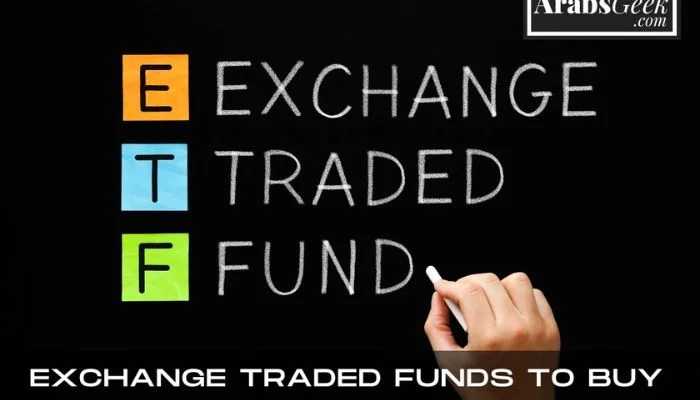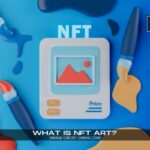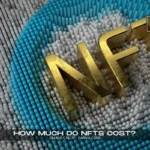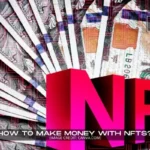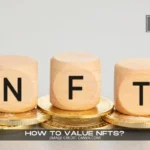Introduction | Exchange Traded Funds To Buy (ETFs)
Exchange Traded Funds (ETFs) have become increasingly popular among investors, thanks to their unique combination of benefits and versatility. In this article, we will explore the world of ETFs, discuss the benefits of investing in them, and highlight some top ETFs to consider buying. We’ll also cover the risks associated with ETF investments and how to monitor your portfolio effectively.
Table of Contents
What are ETFs?
ETFs are investment funds that trade on stock exchanges, similar to individual stocks. They hold a basket of assets, such as stocks, bonds, commodities, or currencies, and aim to replicate the performance of a specific index or market segment. ETFs allow investors to gain exposure to a diversified portfolio of assets with a single transaction, offering an easy and cost-effective way to invest in various markets.
For any business enquiry, you can contact us at ArabsGeek.com
For more of such financial articles, Consider visiting our sister website at EntrepreneursPilot.com
The Benefits of Investing in ETFs
Diversification | Exchange Traded Funds To Buy
One of the main advantages of investing in ETFs is the ability to diversify your investment portfolio. By holding a basket of assets, ETFs reduce the risk associated with individual securities. This diversification can help to protect your investments from market volatility and specific company risks.
Low Costs
ETFs typically have lower expense ratios compared to traditional mutual funds, which means that they cost less to manage and operate. This cost savings can translate into higher returns for investors over the long term.
Tax Efficiency
ETFs are generally more tax-efficient than mutual funds, as they are structured to minimize taxable events such as capital gains distributions. This can help to reduce the overall tax burden associated with your investments.
Trading Flexibility | Exchange Traded Funds To Buy
Since ETFs trade on stock exchanges like individual stocks, they can be bought and sold throughout the trading day at market-determined prices. This provides investors with greater trading flexibility and the ability to take advantage of intraday price movements.
Transparency
ETFs are highly transparent, as they disclose their holdings on a daily basis. This allows investors to know exactly what they are investing in and to make informed investment decisions.
Types of ETFs | Exchange Traded Funds To Buy
ETFs are available in a variety of asset classes, making it easy for investors to gain exposure to different segments of the market. Here are some of the most common types of ETFs:
Equity ETFs
Equity ETFs invest in a basket of stocks, providing exposure to a particular market segment or index. They are often used to gain exposure to a specific industry or sector.
Fixed Income ETFs | Exchange Traded Funds To Buy
Fixed income ETFs invest in a basket of bonds, offering exposure to different types of debt securities. They can be used to generate income and provide diversification in a portfolio.
Commodity ETFs
Commodity ETFs invest in a basket of commodities such as gold, oil, or agricultural products. They are often used as a hedge against inflation or as a way to diversify a portfolio.
Currency ETFs
Currency ETFs invest in a basket of currencies, offering exposure to different exchange rates. They are often used to hedge against currency risk or to speculate on currency movements.
Thematic and Niche ETFs
Thematic and niche ETFs invest in specific areas such as renewable energy, technology, or emerging markets. They are often used to gain exposure to a particular trend or investment theme.
Factors to Consider When Choosing ETFs to Buy
When choosing ETFs to buy, there are several factors to consider to ensure that they align with your investment objectives and risk tolerance. Here are some of the most important factors:
Investment Objective
Consider your investment objective, such as growth, income, or a combination of both, and choose ETFs that align with your goals.
Expense Ratio | Exchange Traded Funds To Buy
Look for ETFs with low expense ratios, as these costs can eat into your returns over the long term.
Fund Size and Liquidity
Choose ETFs with adequate fund size and liquidity to ensure that you can easily buy and sell shares without affecting the market price.
Tracking Error
Look for ETFs that closely track their underlying index or benchmark to ensure that you get the returns you expect.
Historical Performance | Exchange Traded Funds To Buy
Consider the historical performance of the ETF and its underlying assets to evaluate its potential for future growth.
Top ETFs to Consider Buying
Now that we’ve covered the basics of ETFs and the factors to consider when choosing them, let’s take a look at some top ETFs to consider buying:
Broad Market Equity ETFs
- Vanguard Total Stock Market ETF (VTI)
- iShares Core S&P 500 ETF (IVV)
- SPDR S&P 500 ETF Trust (SPY)
Sector-Specific Equity ETFs | Exchange Traded Funds To Buy
- Technology Select Sector SPDR Fund (XLK)
- Financial Select Sector SPDR Fund (XLF)
- Energy Select Sector SPDR Fund (XLE)
International Equity ETFs
- iShares MSCI EAFE ETF (EFA)
- Vanguard FTSE Emerging Markets ETF (VWO)
- iShares MSCI ACWI ex U.S. ETF (ACWX)
Fixed Income ETFs
- iShares iBoxx $ Investment Grade Corporate Bond ETF (LQD)
- Vanguard Total Bond Market ETF (BND)
- iShares iBoxx $ High Yield Corporate Bond ETF (HYG)
Commodity and Currency ETFs
SPDR Gold Shares ETF (GLD)
- Invesco DB Commodity Index Tracking Fund (DBC)
- Invesco CurrencyShares Euro Trust (FXE)
Conclusion | Exchange Traded Funds To Buy
Exchange-traded funds (ETFs) are a popular investment vehicle that offer investors a low-cost and efficient way to gain exposure to various asset classes and market segments. ETFs are highly liquid, transparent, and flexible, making them suitable for investors with different investment objectives and risk tolerances. When choosing ETFs to buy, investors should consider several factors such as investment objective, expense ratio, fund size, liquidity, tracking error, and historical performance. By carefully selecting ETFs that align with their investment goals and risk tolerance, investors can build a well-diversified portfolio that can potentially generate long-term returns.
Frequently Asked Questions (FAQs)
Q1: What is the difference between an ETF and a mutual fund?
A: ETFs and mutual funds are both investment vehicles that pool money from multiple investors to invest in a diversified portfolio of assets. However, ETFs trade like a stock on an exchange and can be bought and sold throughout the trading day, while mutual funds are priced once a day after the market closes and can only be bought or sold at that price.
Q2: Can ETFs pay dividends?
A: Yes, some ETFs can pay dividends, depending on the assets they hold. For example, fixed income ETFs that invest in bonds can pay regular interest payments, while equity ETFs that hold dividend-paying stocks can distribute dividends to investors.
Q3: Are ETFs suitable for long-term investing?
A: Yes, ETFs can be suitable for long-term investing, as they offer a low-cost and diversified way to gain exposure to different asset classes and market segments. However, investors should carefully consider their investment objectives and risk tolerance and choose ETFs that align with their long-term goals.
Q4: Can ETFs be used for short-term trading?
A: Yes, ETFs can be used for short-term trading, as they offer liquidity and flexibility that allows investors to take advantage of intraday price movements. However, investors should be aware of the risks associated with short-term trading, such as market volatility and trading costs.
Q5: How are ETFs taxed?
A: ETFs are taxed similarly to mutual funds, with capital gains taxes being triggered when investors sell their shares for a profit. However, ETFs are generally more tax-efficient than mutual funds, as they have a unique creation and redemption process that can minimize the capital gains tax liability for investors.

